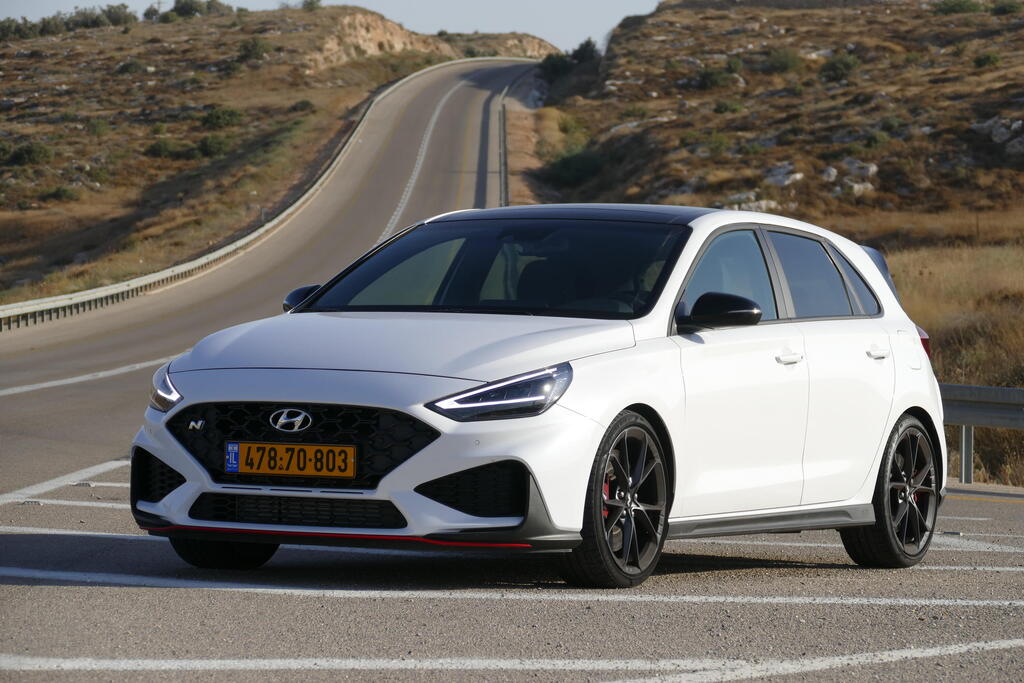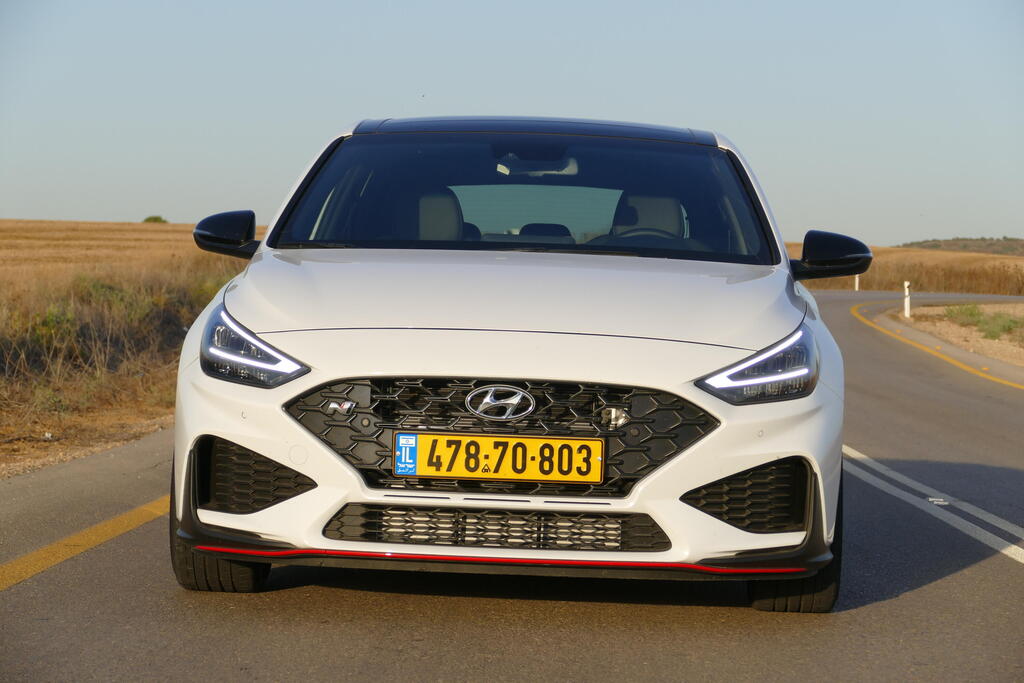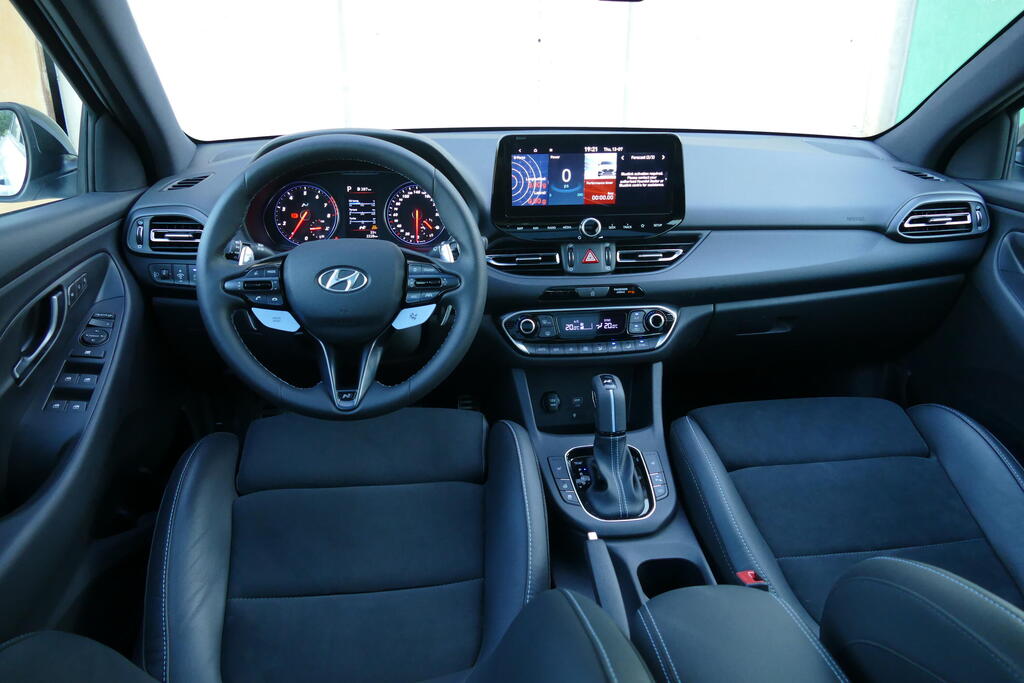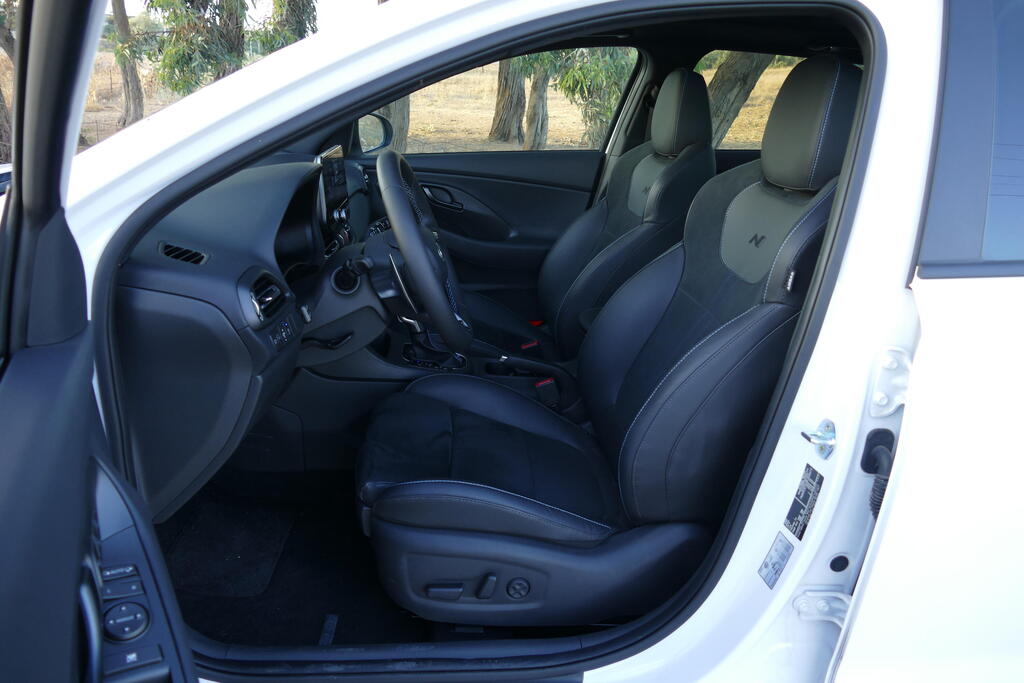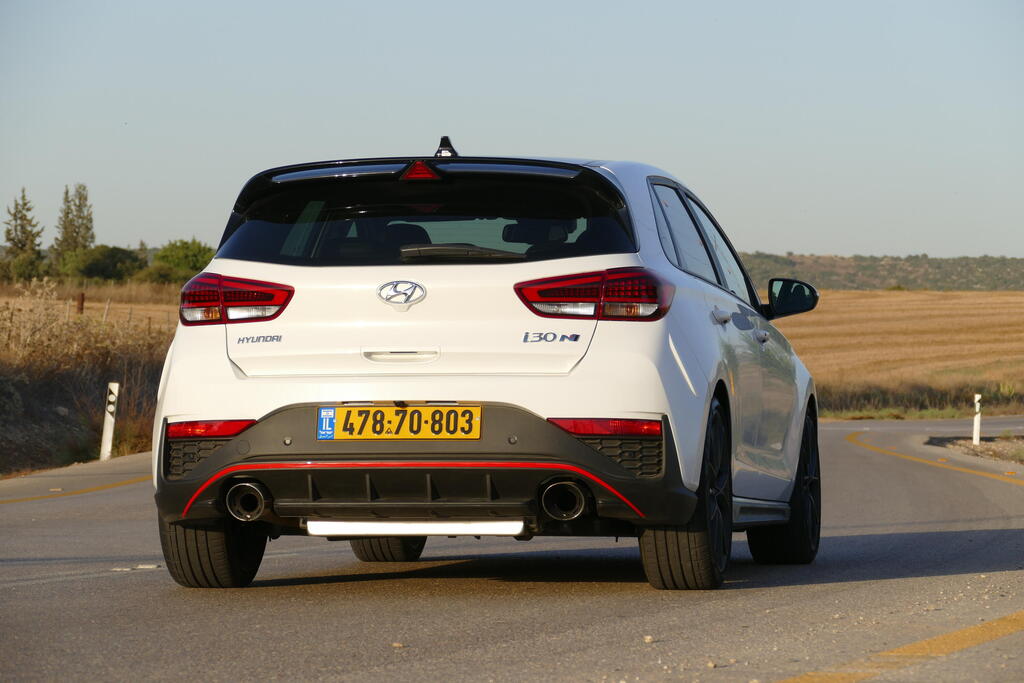The i30N was Hyundai's first venture into the high-performance realm, and it made quite a splash in the hot-hatch category. Even on its first try, the car rose to the top of its class, challenging established European competitors with rich histories and decades-long reputations. The i30N was briefly sold in Israel, where it bested the SEAT Leon Cupra in a comparison test.
More stories:
However, its commercial success was modest, with only 13 units hitting the road, mainly due to the availability of only a manual gearbox. Now the i30N is returning after a facelift, incorporating a dual-clutch transmission among other improvements. Will this help boost its market performance?
All in all, the recent facelift and addition of an automatic transmission make the Hyundai i30N more accessible to a broader audience than before. It stands out with better performance than its competitors and a good balance between dynamic capabilities and everyday usability. But this is where the praises end.
Direct competitors: Cupra Leon, Renault Megane RS, Volkswagen Golf GTI Price: NIS 270,000 ($73,000)
Pros: Dynamic ability, a pleasure to drive, high performance
Decent: Ride comfort, usability
Needs improvement: Transmission, cockpit, price
Score: 7
The transmission that works so well in the Santa Fe does not fare as successfully in the hot hatch. Furthermore, the cockpit has not received adequate attention and now feels outdated, there are no air conditioning vents for rear passengers, and the price tag stands at NIS 270,000, about NIS 15,000 ($4,000) more than superb competitors such as the Cupra Leon and the latest Renault Megane RS. So, despite the upgrade, Hyundai's hot hatch has actually slipped back in the market perspective.
What's Different: The most significant change is the transmission, a dual-clutch (wet) with 8 gear ratios compared to the six-speed manual in the outgoing model. Thanks to super-efficient launch control and slightly more power from the same engine (280 hp, +5), the acceleration to 60mph takes 5.3 seconds, a substantial reduction of 0.7 seconds from the previous model, and quicker (by 0.3 seconds) than its direct competitors from Spain and France.
The numbers are indeed impressive, but in practice, the gearbox disappoints. The drive starts with a jumpy feel, similar to a new driver slipping the clutch, followed by sluggish downshift responses when preparing to overtake, for example. The solution is to control the gearbox using the paddles behind the steering wheel all the time, but of course, that partly defeats the purpose of the gearbox.
We have no complaints about the engine, neither its character nor power delivery, and not about the active exhaust system with backfire pops on every downshift. The fuel consumption during our test was reasonable – 35.3mpg.
In terms of design, the changes are summed up in updated lighting units and modern 19-inch wheels which help reduce unsprung weight by 3.6 kg at each corner and allow for larger discs to be installed (360 mm compared to 345 mm in the outgoing model).
The changes to the cockpit are also modest, consisting of a larger touch screen (10.25” versus 8”) with expanded performance data display. To the safety suite, lane-keeping (correcting deviations) and active blind spot warnings (preventing entry into an occupied lane) were added, in addition to the autonomous braking that was offered previously.
What's Similar: The cockpit remains largely the same, which means an outdated analog dashboard, a single USB socket and excessive black plastic that does not justify a price tag nearing NIS 300,000. The driver's seat provides good body support with a generous range of steering adjustments, and the driving position is excellent. The rear passenger space is typical for compact family cars, but surprisingly there are no air conditioning vents.
Hyundai has recalibrated the steering system and springs, which, as before, are supported by adaptive shock absorbers with the body raised by about 1 cm compared to the regular i30. Various reinforcements to the body help increase stiffness, including a strut connecting the rear shock mounts (increasing stiffness by 6%).
The dynamic performance here is as commendable as its predecessor, whether in terms of grip level, turning speed, braking capability and power reduction due to meticulous system calibration, and even more so in the feel transmitted to the driver.
No less impressive is the driving mode selector which includes an 'N' mode that puts all systems into the most aggressive setting, and also a mode for individual customization of each system separately (three modes for the engine, exhaust, transmission, springs, steering, and stability control and two modes for the limited-slip differential). The result is much more varied than usual and allows for specific calibration for every type of road and driving style.
Despite the stiffening of the body and springs, the comfort of driving in the city and beyond is very impressive, almost identical to the regular i30, and as long as you remain in comfort mode, none of the passengers would suspect that you have bought a sports car.
Engine: 4 cylinders, 2.0 liters, turbocharged gasoline
Power: 280 horsepower at 6,000 rpm
Torque: 295 lb-ft at 2,100 rpm
Transmission: 8-speed dual-clutch, front-wheel drive
Length: 170.9 inches
Width: 70.7 inches
Height: 56.9 inches
Wheelbase: 104.3 inches
Curb weight: 3,208 pounds
Cargo capacity: 13.45 cubic feet
Acceleration to 62 mph, top speed: 5.4 seconds, 155 mph
Fuel economy, emissions: 19.8 mpg, 0.11 lbs CO2 per mile
Airbags: 7
Safety rating (Euro NCAP): Five stars
Price: NIS 270,000


